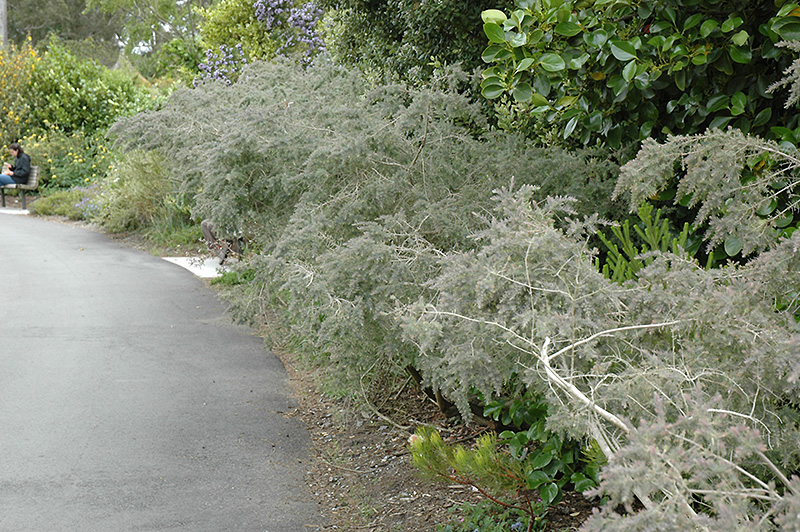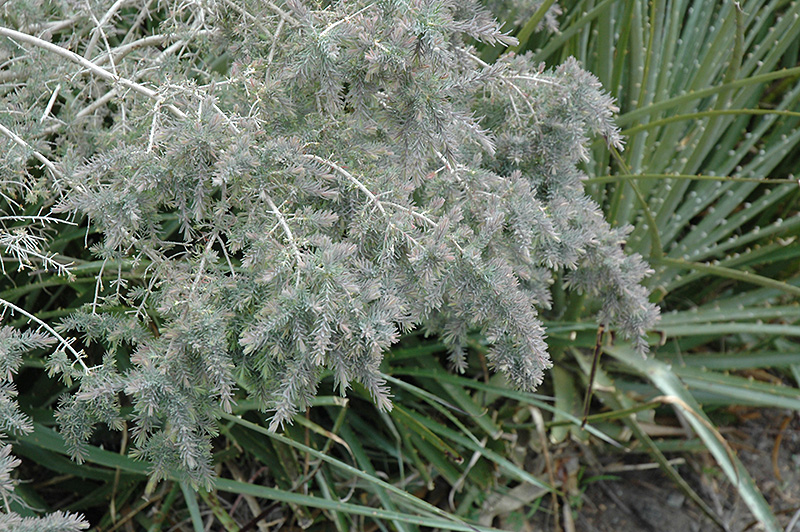Plant Finder
Height: 6 feet
Spread: 10 feet
Sunlight:
![]()
![]()
Hardiness Zone: 8b
Description:
This evergreen shrub would make a unique addition to the landscape; its fine, gray needle-like foliage, gives it a soft appearance; gracefully arching branches are adorned with appealing pale-yellow bottlebrush flowers
Ornamental Features
Gray Honey Myrtle features showy creamy white frilly flowers along the branches from late spring to early summer, which emerge from distinctive red flower buds. It has attractive grayish green evergreen foliage. The tiny needles are highly ornamental and remain grayish green throughout the winter.
Landscape Attributes
Gray Honey Myrtle is a spreading evergreen shrub with a shapely form and gracefully arching branches. It lends an extremely fine and delicate texture to the landscape composition which can make it a great accent feature on this basis alone.
This is a relatively low maintenance shrub, and should only be pruned after flowering to avoid removing any of the current season's flowers. It is a good choice for attracting bees to your yard. It has no significant negative characteristics.
Gray Honey Myrtle is recommended for the following landscape applications;
- Mass Planting
- General Garden Use
- Groundcover
Planting & Growing
Gray Honey Myrtle will grow to be about 6 feet tall at maturity, with a spread of 10 feet. It tends to fill out right to the ground and therefore doesn't necessarily require facer plants in front, and is suitable for planting under power lines. It grows at a fast rate, and under ideal conditions can be expected to live for approximately 10 years.
This shrub does best in full sun to partial shade. It is very adaptable to both dry and moist growing conditions, but will not tolerate any standing water. It is considered to be drought-tolerant, and thus makes an ideal choice for xeriscaping or the moisture-conserving landscape. It is not particular as to soil type or pH. It is somewhat tolerant of urban pollution. This species is not originally from North America.





